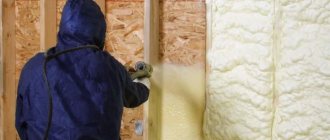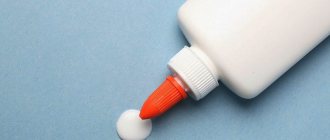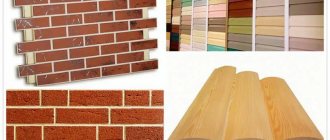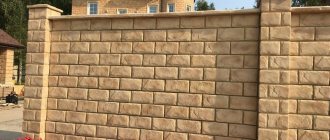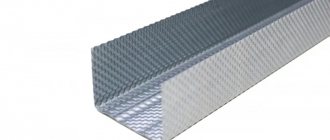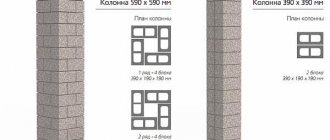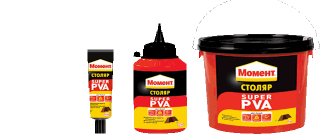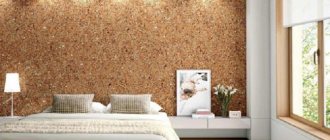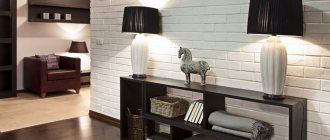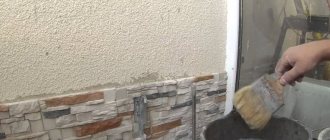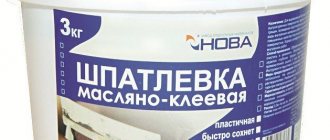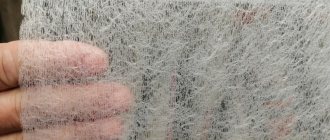Due to the increased popularity of aerated concrete blocks, due to their strength qualities and excellent characteristics, domestic as well as foreign manufacturers are developing various modifications of the adhesive composition, which can further simplify the work of constructing walls from aerated blocks.
The latest new product developed was adhesive foam, represented by a unique composition of modifying and polymeric substances formed on the basis of high-quality grades of cement (M300-M500), as well as purified river sand of fine fractions.
Glue is produced in the form of cylinders filled with the composition under pressure using gas. Cylinders have different volumes, ranging from 0.75 ml and above, and are sold complete with a nozzle or a special syringe gun.
Types of adhesives for installation
For laying walls made of aerated blocks, two main types of adhesive foam are used:
- Portland cement (made from the best brands of cement).
- Polyurethane (made with a predominance of chemical polymers).
Both types are made from mineral components that are well processed, mixed and gassed under production conditions, and packaged in cylinders of various volumes - from 0.75 ml to 1,000 ml.
The cylinders have nozzles that are put on the inlet opening after removing the cap.
The nozzle looks like a tube or syringe that delivers the substance when you press one of the sections of the tube - the retainer.
To use the foam, you need to shake it well for 60 seconds, then turn it upside down and distribute the composition over the prepared surface with a tube using even movements.
Foam adhesive comes in two primary colors – white and grey. The difference in color is that the light tone is intended for use in the warm season, at temperatures above +15°C, and the gray color is more suitable for cool weather, above +5°C, although experts consider it universal and can be used year-round.
The main advantage of white foam is that it matches the color of autoclaved types of blocks. And this contributes to the aesthetics of installation, which is important for the southern regions, which do not always want to do external decoration, due to the attractive external color of the external walls. In addition to aesthetics, white glue is considered economical for the family budget.
Polyurethane varieties can be used all year round, including at low temperatures , since they have a grayer color and a suitable structure that is resistant to cold. This foam provides reliable adhesion and high strength qualities of the wall being built.
The best brands of manufacturers of foam adhesive for gas blocks (with the specified volume), according to users, are:
- Ceresit CT 115 (0.85 ml) . Belongs to the polyurethane series. It can be used at low temperatures - from - 5°C. It does not form cold bridges between the seams, is easy to use, waterproof and can be stored for a long time.
- H+H LimFix (0.75 ml) . Suitable for all seasons, has a polyurethane base. It is very ergonomic, since 1 bottle is enough for 1 m3 of blocks. The thickness of the seam with it is 1 mm, while the foam creates a strong and reliable monolith.
- Bonolit Tytan (0.85 ml) . Belongs to the polyurethane series, used from -10°C to +32°C. It has high adhesive properties, resistance to external and mechanical influences, and provides thermal insulation to seams.
- Makroflex (0.85 ml) . Polyurethane type of glue. Distributes a layer thickness of 2 mm, which is an ideal result for adhesion of blocks to each other. The seams are super strong and it is simply impossible to tear them. Excellent results for load-bearing walls, floor slabs over window and door openings.
- TYTAN Professional (0.75 ml) . Suitable for summer time, despite the fact that it is polyurethane. Requirements for its use are from +5 °C. It is single-component, water-resistant, and provides good thermal insulation.
Regardless of whether Portland cement or polyurethane foam was used in the process of laying aerated concrete, 1 cylinder is enough to lay 1.5-2 m3 of blocks .
The foam hardens instantly. A few minutes after spraying and laying, the block is already difficult to tear off; to do this you need to make an effort using a rubber mallet (special hammer).
After 20 minutes, it is impossible to tear off the material at all without damaging its structure.
Important! Adhesive foam can be used when laying reinforcement, according to the general technological rules that apply to conventional adhesive for gas blocks.
Hygroscopicity of aerated concrete
The ability of aerated blocks to actively absorb water turned out to be a serious problem. All types of concrete tend to absorb moisture, but they release it fairly easily once the right conditions arise. However, aerated concrete not only absorbs moisture, but accumulates it in cavities. Drying aerated blocks is not easy; you need to create the appropriate conditions and give enough time to complete the process.
This feature of the material created two problems:
- inability to use conventional masonry mortar due to water absorption and violation of the hardening regime;
- the inadmissibility of the occurrence of cold bridges on load-bearing walls due to condensation settling and wetting of gas blocks.
The danger of walls becoming wet lies in the tendency of the material to accumulate moisture. In winter, it freezes and begins to expand, tearing apart the walls from the inside. This process is invisible and is determined only at a late stage, when the destruction of the walls reaches serious proportions. It is for this reason that thin-seam aerated concrete masonry technology is used, when the permissible thickness of the seams does not exceed 4-5 mm. With such a thickness, cold bridges cannot form, since the gas blocks surrounding the top and bottom give up some of the thermal energy to heat the seams. If you use a regular solution with a layer thickness of up to 2 cm, the energy of the blocks will not be enough and cold bridges will appear. Condensation will begin to settle, the walls will get wet and will gradually begin to collapse.
How to calculate consumption?
You can calculate the foam consumption for laying walls made of aerated concrete blocks using an online calculator. For the calculation the following matters :
- length, width, depth of the seam;
- foam type;
- foam adhesive yield (indicated by the manufacturer on the packaging).
All data is multiplied among themselves and applied to 1m3 blocks . Based on the volume of the structure being built, the resulting result is taken and also multiplied - this will be the required foam consumption.
Here it is necessary to indicate that the standard norm of 1.5 m3 of blocks requires the use of foam adhesive in the amount of 1 cylinder (0.75 ml). That is, knowing the volume of blocks, it is multiplied with the number of cylinders.
Example:
1.5 m3 blocks = 1 cylinder (0.75 ml), then 3 m3 blocks = 2 cylinders (0.75 ml), etc.
Since the foam is applied in longitudinal strips over the surface of aerated concrete - one or two, it is important to adjust the desired foam output, since the consumption of the adhesive depends on the thickness of the masonry. If the block wall width is:
- 100 mm – you need 1 strip of foam;
- 150-200 mm – 2 strips required;
- 250 -300 mm – it is necessary to lay 3 strips.
You also need to pay attention to the manufacturer's instructions.
Thus, there are 3 calculation options - according to the instructions, applying standards, and using an online calculator. The calculation is easy and simple .
But, if difficulties arise, you can always contact the specialists of any construction company, who will do it quickly and professionally.
Calculation
To calculate what the masonry adhesive consumption will be, consider the following factors:
- Dimensions of building material.
- Presence of defects in geometry.
- Condition of the surface of the blocks.
- Specialist skills.
To calculate dry powder consumption, use the following formula:
- P – amount of glue per m3.
- L – length of one block.
- d – seam thickness.
- H – height of one block.
General safety rules
Taking precautions when using foam when interacting with aerated concrete is the key to maintaining health and safety.
- First of all, we must not forget that any construction work must be carried out wearing protective work gloves.
Modern manufacturers offer different types of comfortable gloves - rubberized, knitted rubber.It is also necessary to remember about work clothes and shoes, and protection of the scalp.
The first type (rubberized gloves) allow the skin of the hands to breathe, and at the same time, perfectly protect against contact with glue. Prolonged exposure to the skin can lead to damage, erosions and irritation. It is also important to protect your eyes and wear special glasses (for installers).
- You cannot spray bottles near a fire or working electrical objects (heat hair dryers, guns, grinders), as this can lead to a fire, including the bottle itself.
- It is necessary to follow the rules for opening the container - carefully removing the cap, removing the membrane and adjusting the passage of foam through the gun or tube so that there is no overuse of adhesive.
Important! When working in unventilated areas for more than 2 hours, when constructing internal walls, it is a good idea to wear a respirator to protect the upper respiratory tract. Even despite the environmental friendliness of the composition, prolonged inhalation of chemical vapors is harmful to any organism.
Terms of use
You need to work in gloves, goggles, and protective clothing.
Before starting masonry, it is important to familiarize yourself with the manufacturer’s recommendations and safety measures during work.
Safety regulations:
- be sure to use protective equipment - gloves, hats (when laying upper blocks), respirators in enclosed spaces;
- do not use foam near open fire and do not store cylinders near heating devices;
- heat the foam to the required temperature only in a warm room, do not use open fire or electric stoves;
- Immediately wash off any foam that gets on your skin or clothes with special solutions, otherwise it will be impossible to do this after drying.
Features of laying aerated concrete blocks
The process of laying aerated blocks on foam has a number of features. The nuances are the following :
Preparatory work. It is necessary to purchase cylinders with the substance and blocks from trusted manufacturers. This also applies to the instrument.- It is also necessary to prepare the surface of the aerated concrete by sanding it thoroughly.
- Foam adhesive should be used only from the second layer of laying gas blocks. The first layer of blocks is laid in a circle, along the perimeter of the building under construction, from the corners, with construction cords stretched from them (for evenness of the masonry).
- The foam is opened after thoroughly shaking the container for 60 s, putting on a syringe (or tube) and removing the membrane, regulating the flow of released foam liquid through the retainer.
- They use foam in the same way as diluted dry glue - apply it to the surface lengthwise, if necessary widthwise, or in a zigzag pattern, depending on the size of the block.
The standard application rate is 1-2 strips. But the cylinder itself must be turned upside down, where the entire working structure resembles a “gun”. - The blocks are fastened for 2 minutes. According to construction technology, the master must tap the surface of connecting blocks laid in a checkerboard pattern with a rubber hammer and a mallet.
- The blocks are laid up to the layer of concrete belt intended for the roof. Excess parts along the edges are sawed off with a hacksaw.
- Do not forget about reinforcing the layers with steel rods every 2 laid layers.
That's all, there is nothing complicated about installing blocks using foam. The main thing is the prepared surface and the correct opening of the cylinder, according to the instructions . Apply even layers and apply aerated concrete. Convenient, simple, fast, reliable and durable.
Video on how to properly lay aerated concrete blocks on foam:
Characteristics
Concrete foaming agent can be organic or synthetic. Synthetics, compared to natural products, have a lower price and are used for the production of low-quality products.
When using chemistry, the block production time increases. The strength of foam concrete will be lower. An attempt to improve quality will lead to an increase in production costs and a decrease in its profitability.
Some plasticizers react with synthetics and therefore the choice of components is limited.
The price per kg of foam former varies from 70 rubles. and higher. You can use synthetics both in schemes based on barotechnology and in classic versions with a foam generator:
- Barotechnology is a less expensive and simple process. The basic components of artificial stone - water, cement, sand or ash - are introduced into a sealed mixer along with a foaming agent. The pressure in the mixing container is then increased, at which the composition is mixed. During the stirring process, the solution becomes saturated with air. To accelerate and regulate structure formation, it is possible to use functional additives.
- A foam generator is needed to produce foam separately. It is a container into which the foam former is poured. The composition from it is fed into the mixing chamber, where it is combined with air from a pump or compressor. The emulsion flows through a jet or Laval nozzle into a foam cartridge designed to foam the starting material. The output is foam, the quality of which changes due to the adjustment of the valves for supplying the foaming emulsion and air. They are placed in front of the mixing chamber together with shut-off valves.
Organic foaming agents (protein or protein)
They are considered to be higher quality supplements. When using them, concrete is obtained that fully complies with GOST 25485 - 89.
Organics have a number of advantages:
- Artificial stone cooks faster.
- After filling the form, the concrete mass is more stable.
- The composition of the blocks is more natural.
- High density concrete can be made.
Natural educators are a better choice, but are more expensive. Therefore, many manufacturers of building materials prefer to independently manufacture the composition and foam-producing units - foam generators.
The industry produces different types of organic educational foam.
For example, the protein composition “Etalon” is a dark brown liquid with a density at 20°C of 1110 kg/m3. The composition hardens at -250°C, has a pH value of about 7, and does not change its properties when defrosted. It can be stored at a temperature of - 50°C...+ 40°C in its original packaging for 24 months in a place out of direct sunlight.
The technical foam that will be obtained using the “Etalon” will have the following characteristics:
- foaming agents are diluted from 1:60 to 1:40 depending on the desired concentration of the working solution;
- water is used as a solvent;
- foam with a uniform microporous structure is white;
- multiplicity - 7-50;
- from 1 kg of foam formation, 830 liters of foam are obtained with a resistance of at least 98%.
Application benefits
The advantages of using foam for aerated concrete are:
Application of installation material inside and outside the building.- Environmental friendliness of incoming substances.
- Low thermal conductivity, providing additional protection to the walls, absence of cold bridges, like sand-cement mortar or ordinary glue, with a thickness of more than 4 mm applied to the blocks.
- The ability to make thinner seams that will provide a high degree of block adhesion with 1-2 mm of foam.
- Cost-effectiveness and speed of the work process, especially for polyurethane compounds (1 bottle of 750 ml replaces 1 30 kg bag of dry glue).
- Externally, the foam substance looks like ordinary polyurethane foam, but the composition is harder, ensuring strong adhesion of the bonded surfaces and a high hardening speed (after application, installation occurs within 1 minute).
- Some types of foam adhesive can be used at low temperatures.
The disadvantages of using foam include the following:
- Requires a perfectly smooth surface, which is achieved by careful grinding with a special machine or grater.
- It belongs to a high class of fire resistance (capable of igniting instantly).
From the above advantages and disadvantages, it is clear that the material has many more advantages than disadvantages, which is why foam is so in demand in Western foreign countries.
Video about all the pros and cons of laying aerated concrete on adhesive foam:
Reviews
- Vitaly: “I have been working in construction for more than five years, during which time I often had to do masonry with aerated blocks. The glue usually used was dry, domestically produced. I have not yet encountered any frankly bad compositions and, in general, the quality and speed of work depend more on the blocks themselves. If the surface is smooth and there are no chips or cracks, then the glue consumption is less.”
- Pavel: “I used gas blocks when building a garage. The adhesive solution was taken from a trusted company - Ceresit. I didn’t notice any particular overspending, although it was the first time I worked with aerated concrete (before that I had only done brickwork myself). The cost is also, in my opinion, quite adequate; in such a case you cannot do without unplanned expenses, so I still had to buy several bags. The solution itself turns out to be very plastic, it is better to work with this than with ordinary cement.”
Cost in the Russian Federation
The average price of foam for gluing gas blocks in Russia, based on the examples of popular products presented above, is shown in the table below:
| No. | Brand name of foam for aerated blocks | Average price in the Russian Federation (RUB) |
| 1. | Ceresit CT 115 (0.85 ml) | 400 |
| 2. | H+H LimFix (0.75 ml) | 300 |
| 3. | Bonolit Tytan (0.85 ml) | 400 |
| 4. | Makroflex (0.85 ml) | 350 |
| 5. | TYTAN Professional (0.75 ml) | 300 |
A bottle of glue is approximately equal to 1 bag of dry glue . If you look by city, the construction market prices are highest in Moscow and Novosibirsk. The lowest price is observed in the Volgograd and Bryansk regions. There, 1 cylinder costs 250-270 rubles.
